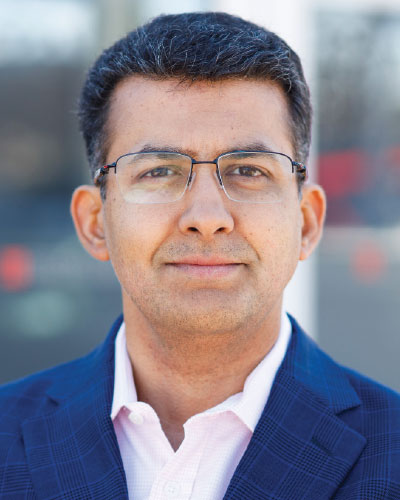Sri Sridharan, who was named CEO of MedRisk LLC in September, joined the managed care organization as chief client officer in 2022 and was appointed president earlier this year. Prior to MedRisk, Mr. Sridharan spent several years at Marsh LLC and Gallagher Bassett Services Inc. in claims management and analytics. Business Insurance Assistant Editor Louise Esola interviewed him recently on new strategies to help injured workers recover and other trends to watch. Edited excerpts follow.
Q: What was your career trajectory into workers compensation?
A: I did my master’s in industrial engineering and part of that is looking at safety, ergonomics and biomechanics. That resulted in joining Marsh in ergonomics consulting, and when you think about ergonomics it’s mostly focused on workers compensation. I grew up in India and you don’t know much about workers comp if you come from a country where that does not exist. So it’s pretty cool being in a role that has a broader purpose of helping people in need, helping people in pain, helping people going through a difficult phase of their life. So that was very attractive to me.
Q: What do you like about what you do?
A: Being part of this industry where you get a phone call, when somebody is in need of getting back to their life, getting back to the kind of work they do, and we get to help them with the recovery process. We do that every single day.
Q: The industry has moved away from medicating for pain, which may have enhanced the practices at MedRisk. What are some companywide goals?
A: If you think about the workers comp trends, you see there’s a reduction in the use of opioids to manage pain, and there are also fewer surgeries. That accelerated during COVID because of the health care limitations we had at the time.
Physical therapy has evolved to be more effective or equally effective and a noninvasive alternative, when compared to what we used to do before.
We are even more focused on how we deliver the care that the patient needs. Each patient is unique based on where they live, the age group, that body part that is impacted; and then there are the psychosocial and behavioral, the comorbid conditions that exist.
How do we understand the unique nature of each of those to the patient? How do we make sure that they go to the right provider, who has expertise to help them? How do we make sure that we manage that episode of care from the initial evaluation to discharge so that we can engage with a provider and the adjuster at the right times? When and where do we see barriers to recovery? How do we leverage technology? How do you leverage data? That is the journey that we are going through right now.
Q: Where do data and analytics fit in?
A: Predominantly everything we do is driven by the data that we have. We process 6 million bills every year and we’ve been doing it for 27-plus years. That’s a lot of data that we have in our database. Each data point is helpful in thinking about which providers are effective in treating a lower back injury for a 36-year-old who lives in Chicago, for example. We have all the data on the providers to see who’s really good at delivering the best outcomes for that patient based on the patient characteristics.
We use data for scheduling the care providers and treatment. We have data on claim injury notes, where we leverage that to find that 10% to 15% of patients experience more barriers to recovery. We engage very early with those claimants and with those providers so that they can have an optimal recovery process. If you think about the entire work comp ecosystem, the physical therapy providers tend to spend the most time with the patient. That’s a lot of interaction with a patient and a lot of opportunity to understand everything outside of that injury: What is going on in your life? What is going on outside of this injury in your work? What are the barriers to recovery? We leverage that opportunity to make those insights available so that we can collectively work together as a team and get patients better.
Q: What are some of the challenges facing the industry as a whole?
A: We have different functions across this industry. You have an adjuster, you have a scheduler, you have clinical experts. How do you make sure that everybody’s aligned on our core purpose of helping that patient get better sooner? Making sure everybody’s aligned, everybody’s focused, is something that we are working toward every day.
Q: What are some other top trends to watch?
A: You have fewer claims, but the claims that happen are more severe, more complex, more expensive, and need more expertise. This is not 100 easy claims. It’s going to be 20 really complex claims that need specialist expertise to help get the injured worker back to their pre-injury state. That’s something that we need to always think about in terms of how we are evolving as an industry to reorient ourselves on a medical recovery process rather than just a claims process.
Q: What improvements would you like to see in the comp industry?
A: In this industry we have a lot of insights on the injuries, patient, providers, etc., but these are now siloed across various organizations that specialize in various solutions to help the injured employees get back to work and health. We will be significantly more effective in our objectives if we are able to work with each other on a more consistent basis. We are starting to see this more and more being shared and utilized, but we still have a lot of opportunities to continually improve our medical and cost outcomes.
